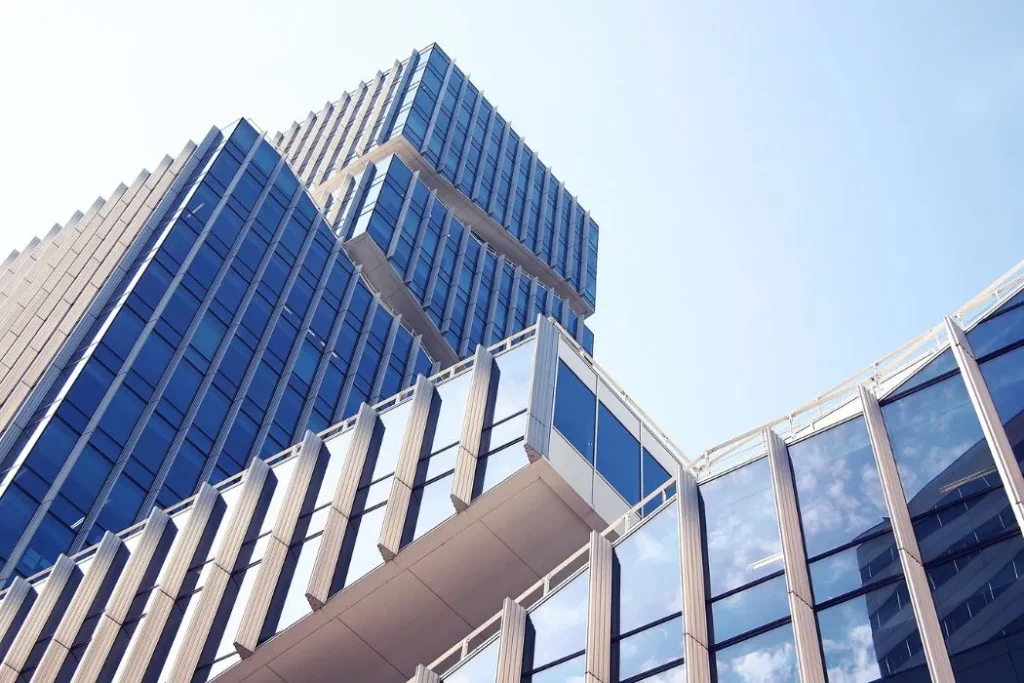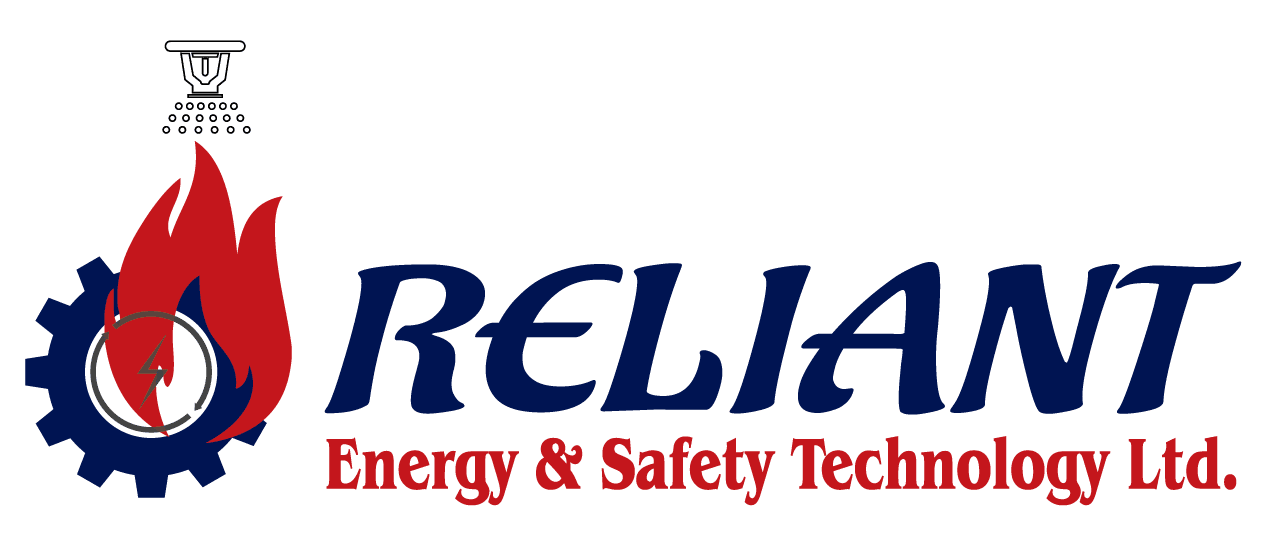What is commercial ventilation?
Ventilation ensures effective air circulation in your office, retail store, or commercial space. It maintains a steady flow of fresh air, helping to remove airborne particles, odors, microorganisms, and other contaminants, creating a healthier and more comfortable environment.
For detailed guidelines on maintaining your electrical systems, check out our Electrical System Maintenance.
Types of Ventilation
Natural Ventilation
Natural ventilation relies on outdoor air to circulate through your building via open doors, windows, or strategically placed vents. It is an energy-efficient option that improves air quality and indoor comfort. However, it has limitations:
- Weather Dependency: Rain, storms, and extreme temperatures can make natural ventilation impractical.
- Allergen Levels: Outdoor air may bring pollen, dust, and other allergens into the workspace.
- Limited Control: Natural ventilation may not effectively address specific air quality challenges.
Mechanical Ventilation
Mechanical ventilation systems use fans, ducts, and specialized equipment to maintain consistent airflow and remove pollutants. Common types include:
- Supply Ventilation: Draws in fresh air and distributes it through ductwork.
- Exhaust Ventilation: Removes indoor air to reduce contaminants.
- Balanced Ventilation: Combines intake and exhaust systems for a harmonious airflow. Advanced systems like Energy Recovery Ventilators (ERVs) and Heat Recovery Ventilators (HRVs) conserve energy by preconditioning incoming air.
Advantages:
- Provides precise control over air quality.
- Operates effectively regardless of outdoor conditions.
Mixed-Mode Ventilation
Mixed-mode systems integrate natural and mechanical ventilation to achieve an optimal balance. This approach maximizes energy efficiency while maintaining effective air circulation.

Common Pollutants in Commercial Spaces
Commercial environments often face higher levels of pollutants compared to residential settings. These include:
- Particulates: Dust, dirt, fibers, and other small particles that can be inhaled.
- Organic Contaminants: Bacteria, mold spores, and viruses that may cause illness.
- Fumes and Odors: Chemicals from paints, cleaning agents, and industrial processes.
Why Commercial Spaces Require Additional Ventilation
- Elevated Pollutant Levels: Processes like manufacturing, painting, or packaging generate microscopic particles that degrade air quality.
- Limited Natural Ventilation Options: Many commercial buildings lack accessible windows or doors for natural airflow.
- Constant Exposure to Contaminants: Employees are exposed to indoor air pollutants for extended periods, making high-quality ventilation critical for their health and productivity.
Requirements for commercial ventilation
Ventilation Rate Standards
A comfortable and healthy indoor climate begins with adhering to proper ventilation rates. Industry guidelines, such as those established by the American Society of Heating, Refrigerating and Air-Conditioning Engineers (ASHRAE), provide a benchmark for ventilation rates. According to ASHRAE:
- Ventilation rates are measured in cubic feet per minute per person (cfm/person).
- General guidelines recommend a range of 5 to 10 cfm/person for occupied spaces.
Specific Requirements by Space Usage
Ventilation standards can vary based on building size and room function. For instance:
- Break Rooms: Require approximately 5 cfm/person.
- Laboratories or Media Rooms: Require up to 10 cfm/person.
Ensuring compliance with these standards is essential for providing a safe and comfortable environment for occupants.
Maintaining and Controlling Air Quality
Controlling indoor air quality goes beyond basic ventilation. Reliant EST aligns its services with ASHRAE Standard 62.1, which defines acceptable indoor air quality parameters to safeguard health and comfort. Here’s how we ensure superior air quality:
Key Considerations:
- Outdoor Air Intake: Ensuring the air drawn into the building is clean and uncontaminated.
- Occupancy Levels: Adjusting ventilation systems to match the number of occupants.
- Pollutant Sources: Identifying and mitigating contributions from building materials or activities.
- Airflow Design: Directing air from cleaner areas to those with higher pollutant levels.
- Exhaust Systems: Properly positioning exhaust vents to prevent reintroducing pollutants.
Contaminant Removal for Safer Air
Efficient ventilation systems are designed to remove a variety of indoor air contaminants, such as:
- Particulate Matter: Dust, pollen, and dander.
- Gaseous Pollutants: Carbon monoxide, ozone, and VOCs.
- Biological Contaminants: Mold, bacteria, and mildew.
Common Sources of Indoor Air Pollutants:
- Outdoor traffic emissions introducing lead, benzene, and carbon monoxide.
- Cleaning chemicals, paints, and adhesives releasing VOCs.
- Indoor biological sources like mold and pest droppings.
Reliant EST’s advanced HVAC solutions target these contaminants to deliver cleaner, healthier air for your commercial spaces.
Compliance with Codes and Energy Efficiency
Adhering to ventilation regulations is crucial for operational compliance and occupant safety. Reliant EST ensures your building meets all relevant codes, including:
- Indoor Climate Control: Maintaining appropriate air quality, temperature, and humidity levels.
- Pollutant-Free Air: Ensuring air is free from harmful substances.
- System Maintenance: Regularly inspecting and optimizing ventilation systems to stay within code.
Additionally, our energy-efficient HVAC systems reduce operational costs while prioritizing air quality and comfort. By incorporating quiet, efficient designs, we help create a distraction-free environment for your employees and customers.
Mechanical Ventilation: The Best Option for Commercial Spaces
Types of Mechanical Ventilation
- Supply Ventilation: Ideal for hot or temperate climates, ensuring a constant influx of fresh air.
- Exhaust Ventilation: Effective in cold climates to expel indoor air and reduce pollutants.
- Balanced Ventilation: Suitable for all climates, with energy-saving features that enhance efficiency.
Why Choose Reliant EST for Your Ventilation Needs?
At Reliant EST, we stand out from competitors by offering:
- Customized Solutions: Tailored ventilation systems designed to address your specific challenges.
- Cutting-Edge Technology: We use advanced equipment to ensure efficiency and reliability.
- Expert Team: Our experienced professionals provide end-to-end support, from system design to installation and maintenance.
- Comprehensive Services: Beyond ventilation, we specialize in Plumbing, HVACR, Fire Protection, and Alarm Systems for both commercial and residential settings.
Visit our detailed article to learn more about the importance of electrical substantial services in Bangladesh.
Conclusion: Commercial Building Ventilation
Proper ventilation is a vital aspect of maintaining a safe and healthy environment in commercial buildings. It not only enhances air quality but also contributes to employee well-being, customer satisfaction, and overall productivity. Investing in a quality ventilation system is a proactive step toward ensuring a comfortable and sustainable workspace.
FAQs
Q1. Why is ventilation important in commercial buildings?
Ventilation is crucial because it maintains indoor air quality by circulating fresh air and removing pollutants, odors, and contaminants. This creates a healthier environment for employees and customers.
Q2. What are the types of ventilation systems commonly used in commercial buildings?
Common systems include natural ventilation, mechanical ventilation (HVAC systems), and hybrid systems that combine both natural and mechanical processes.
Q3. How does ventilation affect energy efficiency in commercial spaces?
Properly designed ventilation systems can enhance energy efficiency by reducing the need for excessive heating or cooling, especially with modern energy-efficient HVAC systems.
Q4. What are the signs of poor ventilation in a commercial building?
Signs include stuffy air, unpleasant odors, mold growth, excessive humidity, and complaints of allergies or respiratory issues among occupants.
Q5. How often should a commercial ventilation system be maintained?
Regular maintenance is essential and should be performed at least twice a year to ensure optimal performance and air quality.

